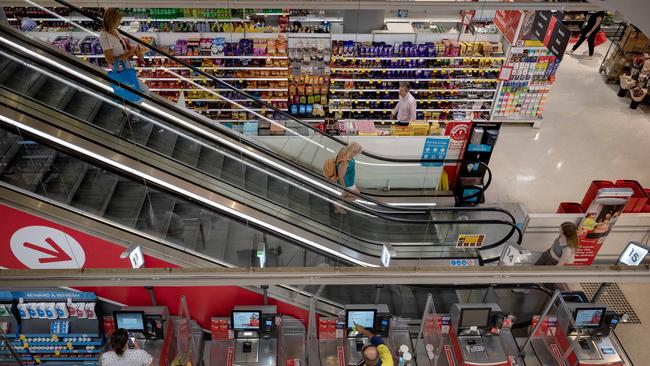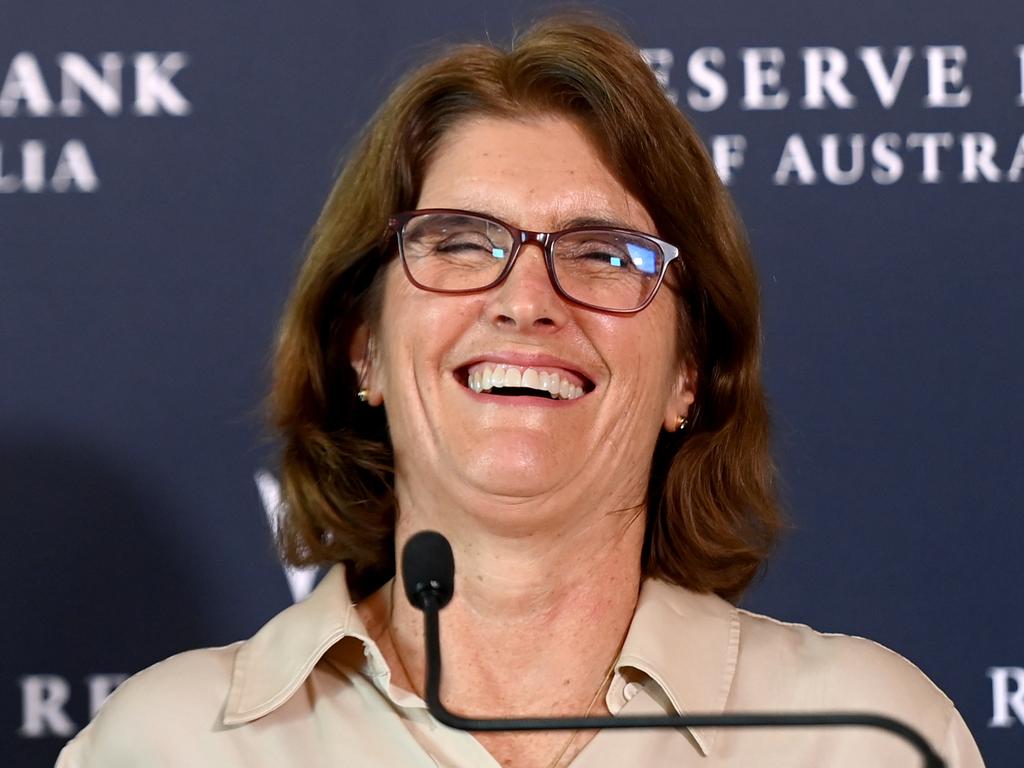Rate cut hopes dashed as inflation comes in hotter than expected
Interest rates are likely to stay high into next year after inflation eased to 3.6 per cent in the year to March but accelerated sharply through the first three months of 2024.

Accelerating inflation through the first three months of the year means Jim Chalmers must maintain a tight grip on spending in the May budget, economists say, as evidence of persistent price pressures dashed hopes of a rate cut this year.
As the Treasurer insisted Labor’s economic and fiscal strategy would still pivot towards growth, analysts warned the government must not announce big new spending measures or risk fuelling price pressures and even a 14th Reserve Bank rate hike.
Consumer prices overall climbed by a solid 1 per cent in the quarter, well up on 0.6 per cent in the three months to December, and above the 0.8 per cent predicted by economists. Annual inflation was down from 4.1 per cent, the Australian Bureau of Statistics figures showed.
The fastest annual increase in rents in 15 years, the biggest quarterly jump in education fees in over a decade and surging insurance and health costs confirmed household cost-of-living pressures remain intense.
Two weeks ahead of the Reserve Bank’s next board meeting on May 6-7, financial markets were pricing in a 19 per cent chance of a rate cut by December, against 80 per cent before Wednesday’s inflation report.
A number of analysts from major banks such as Westpac, UBS, AMP, RBC Capital and Nomura also argued the data had pushed back the prospect of mortgage relief to later this year or earlier the next, with Citi chief economist Josh Williamson saying it “pours cold water on hopes of RBA rate cuts in 2024”.
Judo Bank chief economic adviser Warren Hogan said “there is a growing risk that the next move in rates is a hike”, while Barrenjoey chief economist Jo Masters said the next move was most likely down in February, but “the probability of a hike in the next couple of months is higher than a cut”.
The Treasurer said inflation was still “heading in the right direction”, even if “not as fast as we would like, and not as far as we would like yet”.
With the government championing its Future Made in Australia policy to refashion the economy and supercharge investment over the coming years, Dr Chalmers repeated that the focus of the May budget would still pivot towards supporting growth.
“The budget will maintain a primary focus on fighting inflation, but not a sole focus on fighting inflation,” he said.
“Cost of living will be a big feature of the budget that we hand down next month, and housing will be a big feature … as well.”
But as consumer prices as measured on a monthly basis showed inflation lifted to 3.5 per cent in the year to March, from 3.4 per cent in January and February, EY chief economist Cherelle Murphy said “it feels a little early to pivot”.
“I just don’t think the inflation story is behind us, I just don’t think it is, and caution is warranted,” Ms Murphy said.
“It doesn’t leave the government a lot of discretion for additional spending if it is genuinely concerned about the inflation outlook, and I think it is.
“We have been sceptical of rate cuts this year, and this confirms our expectation that the heat in the economy is still too much, and the Reserve Bank would not want to risk cutting rates in this environment.”
The ABS report showed that prices were rising fastest in areas families could not avoid.
Insurance premiums surged by an incredible 16.4 per cent in the year to March – the strongest rise in 23 years.
Amid an ongoing shortage of homes for lease, rents were again among the major inflationary pressure over the first three months of 2024, climbing by 2.1 per cent in the quarter and by 7.8 per cent in the year – the strongest increase in 15 years, the ABS said.
The hit to renters would have been even worse were it not for additional government support, with the ABS calculating residential lease costs would have jumped by 9.5 per cent were it not for a big boost to Commonwealth Rent Assistance in September.
The quarterly figures showed major increases in the cost of education – up by more than 6 per cent in the three months as fees rose for the year.
Medical and hospital services lifted by 2.3 per cent in the quarter and 4.5 per cent in the year, as GPs and other health service providers reviewed their consultation fees, and the Medicare and Pharmaceutical Benefit Scheme Safety Net thresholds were reset.
Independent economist Chris Richardson told Sky News the government needed to keep a tight rein on spending or risk not getting a rate cut ahead before voters next headed to the polls.
Mr Richardson said the fiscal settings broadly – higher spending and lower taxes, notably for workers from July – were “making it a bit harder for the Reserve Bank to get on top of inflation”.
“It does mean that the government has to be careful not to do too much more. Otherwise, certainly markets will be pointing out that you may not get a rate cut ahead of the election,” he said.
While there were “good economists” raising the risk that the RBA may be forced to restart its hiking cycle, Mr Richardson said the pain of higher borrowing costs was being felt more acutely here than overseas.
“So I’m very hopeful that we don’t need to raise rates anymore, but I would not be hopeful that we’re cutting interest rates in Australia any time soon,” he said.
The underlying measure of inflation preferred by the RBA – the trimmed mean consumer price index – also climbed by 1 per cent in the quarter, and 4 per cent through the year – still far above the 2-3 per cent targeted by the central bank.
Services inflation – an area of particular concern for the RBA – eased from 4.6 per cent in December to 4.3 per cent in the year to March, while goods prices continued their rapid recent decline to 3.1 per cent, against 3.8 per cent in the prior period.
Opposition Treasury spokesman Angus Taylor said the government’s top priority should be putting downward pressure on inflation, which he said was clearly now a homegrown phenomenon.
“We’ve got a situation right now where the government has the foot on the accelerator, and it seems to be pressing harder on the accelerator, as the Reserve Bank has the foot on the brake,” Mr Taylor said.
“And the fear is that they’re going to have to press harder to fight against the government.”
There were further worrying details in the consumer price report for the RBA board.
“Non-tradables” prices which better reflect the strength of domestic demand – including rents, insurance premiums and construction costs – climbed by a solid 5 per cent in the year to March, down from 5.4 per cent.
In contrast, annual inflation for “tradables” climbed by just 0.9 per cent, as the prices for imported goods such as clothing, footwear, furniture and household appliances were actually lower than 12 months earlier.







To join the conversation, please log in. Don't have an account? Register
Join the conversation, you are commenting as Logout